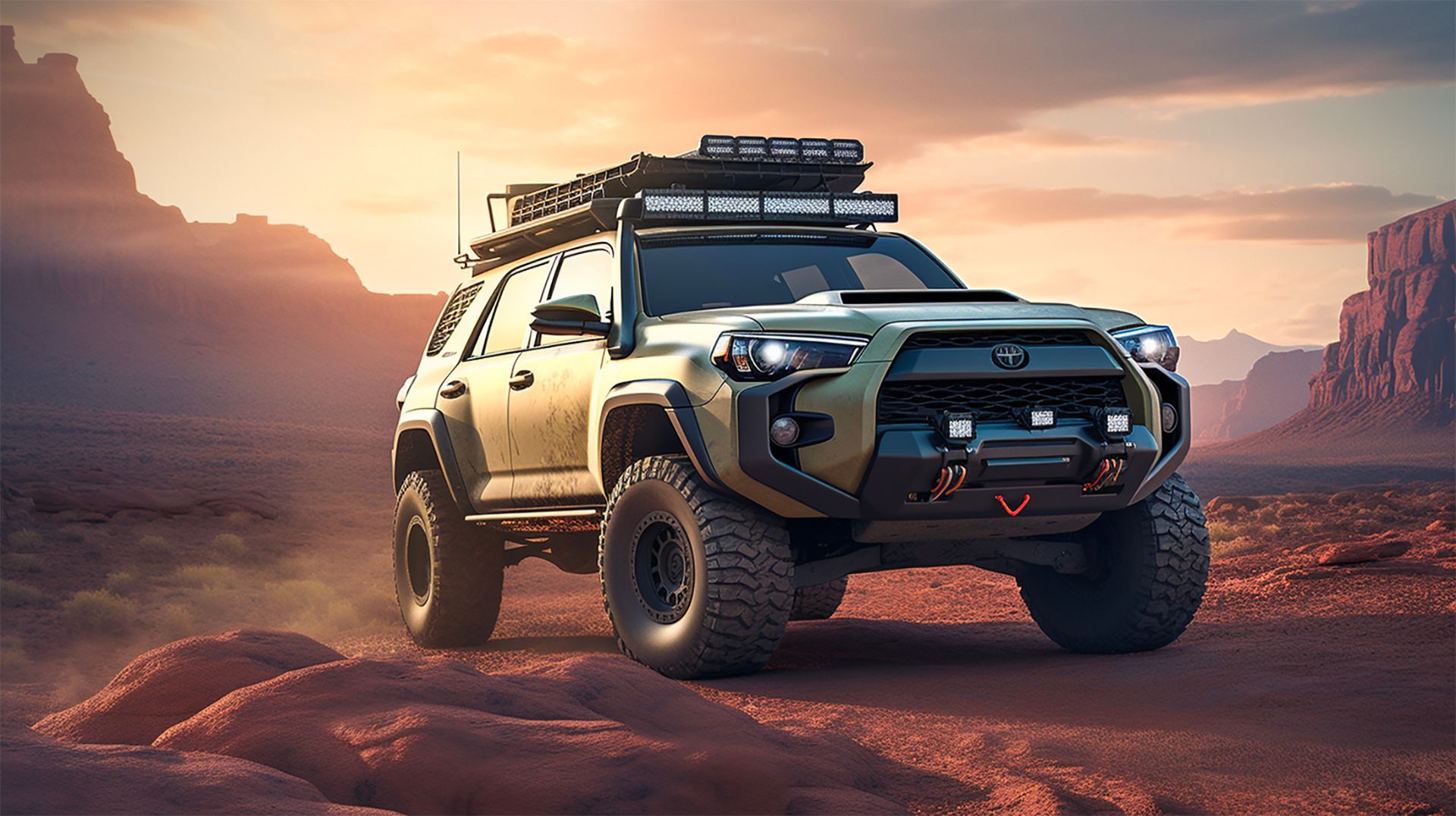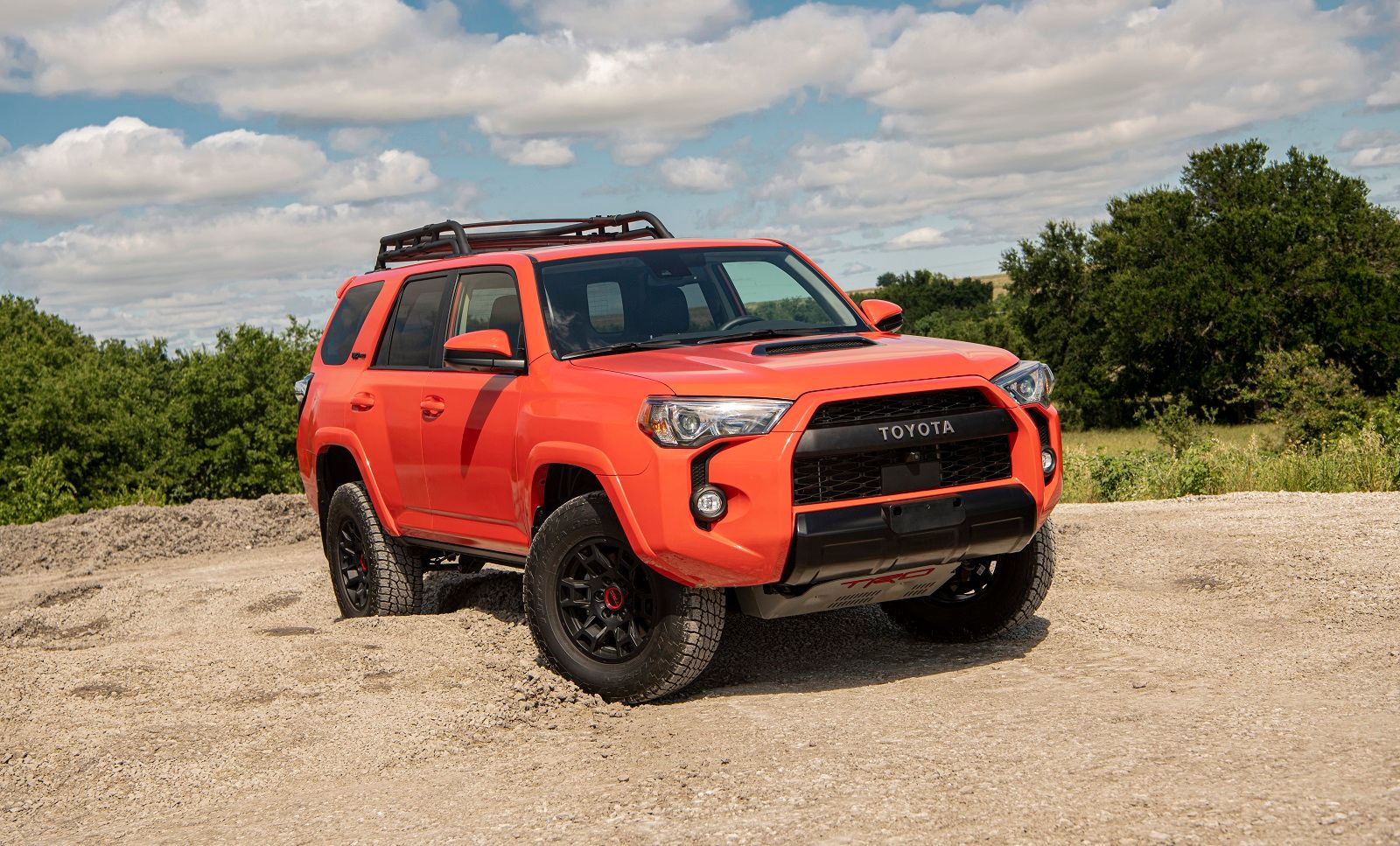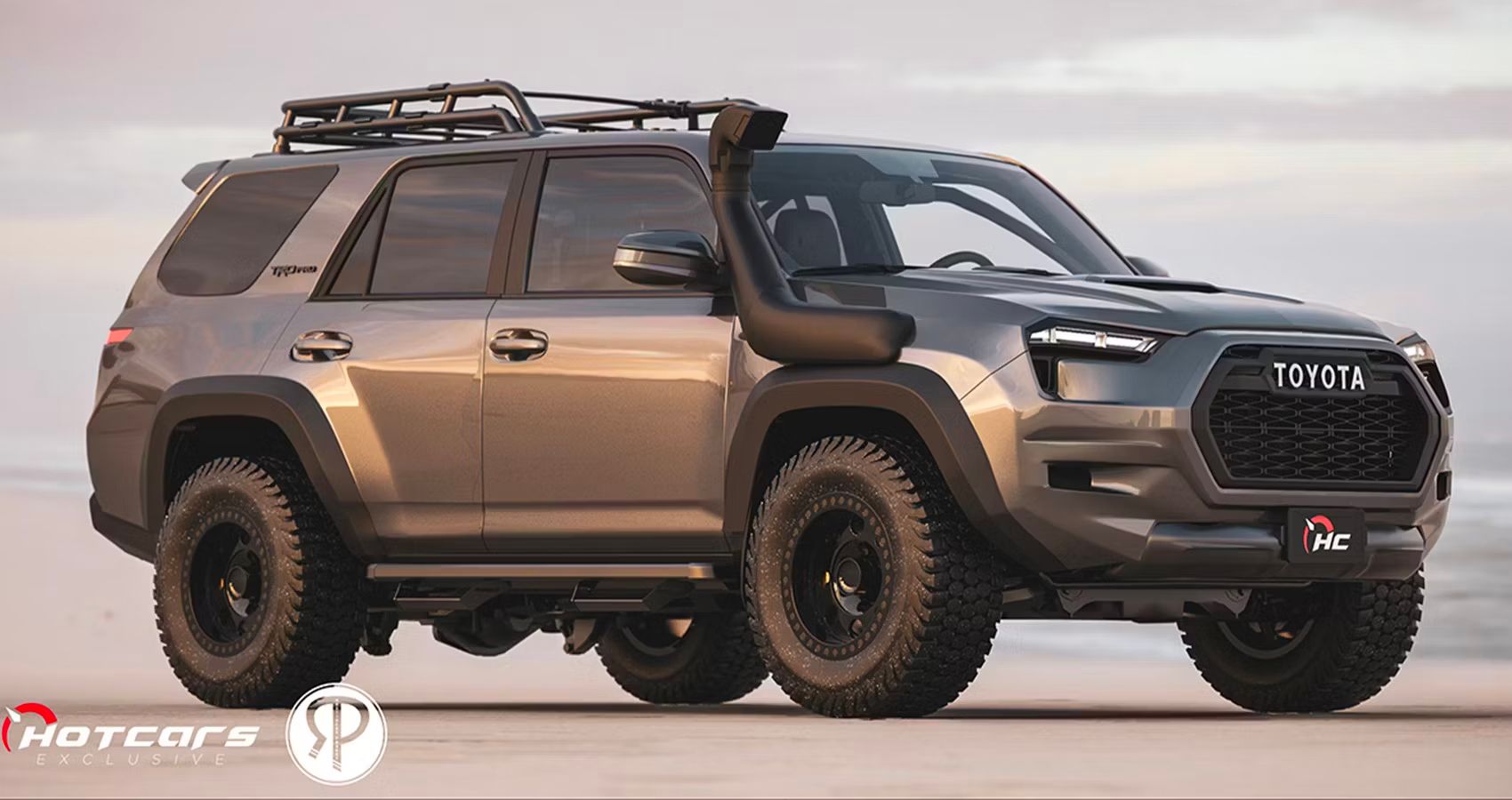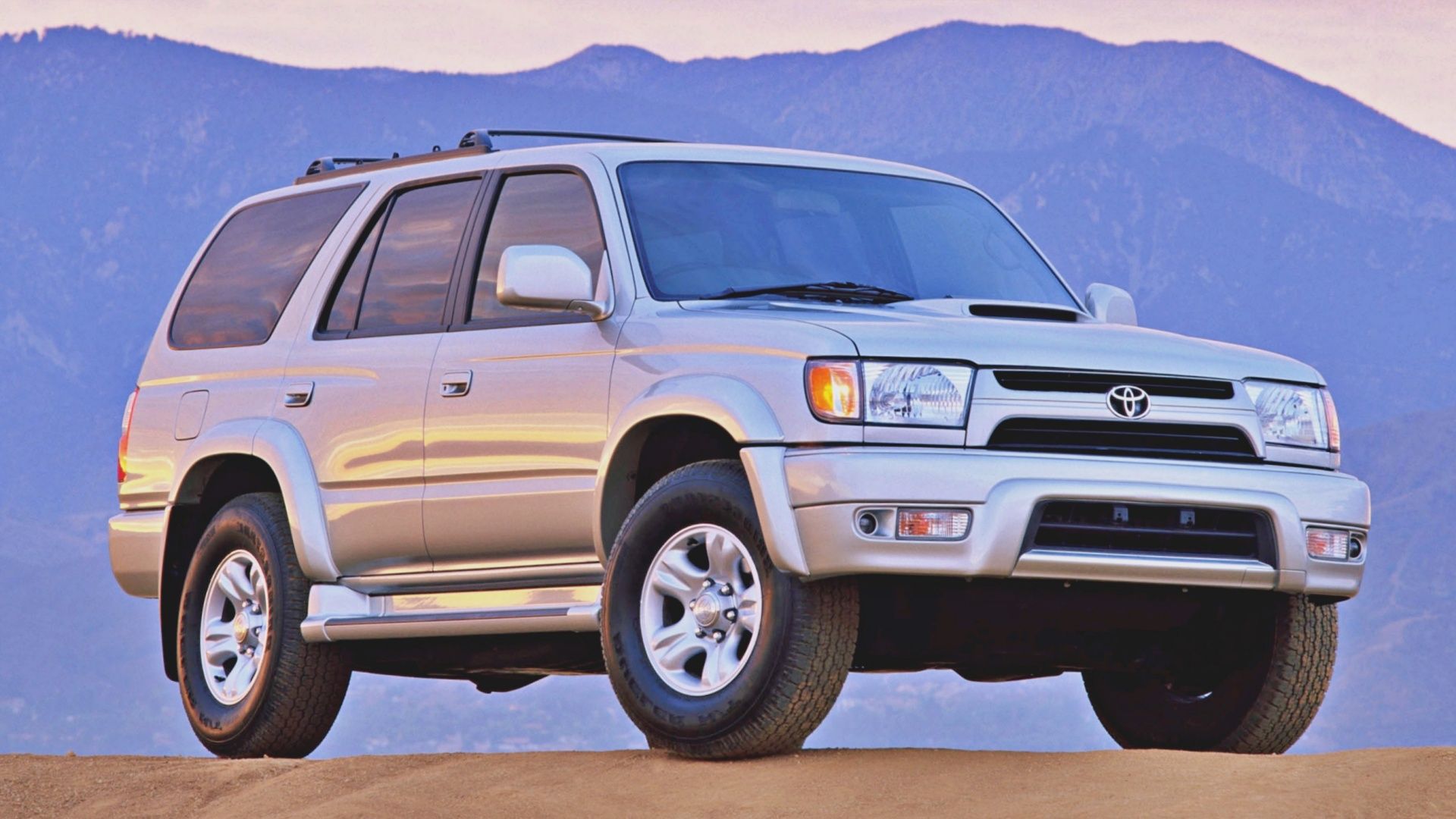The 2024 Toyota Land Cruiser just made its grand debut after a three-year hiatus, making its return to the U.S. market after the 200-series went out of production in 2021. It brings with it some hefty updates, new technology, and solid off-road capability, but you might not want to go place that order just yet, because a new Toyota 4Runner is on the way too.
At this point, it’s pretty clear that Toyota is investing heavily in its largest and most capable vehicles. Unlike the Land Cruiser, the 4Runner has remained a constant in the U.S. market since the fifth-gen N280 model was launched way back in 2010. After more than a decade, however, it’s time for something new, and new insider information has exposed a little bit of what we can expect. Arriving in 2024 as a 2025 model, the new 4Runner could be the last great gas-powered off-roader before full-scale electrification takes over.
What The New 2025 Toyota 4Runner Brings To The Table
Information revealed by a “long-time credible insider” to 4runner6g.com has revealed that the new, 2025 4Runner will be going back to its roots to some extent. As was the case with the third-generation model, the new 4Runner will take at least some inspiration from the new 2024 Toyota Tacoma. This means it’ll have that angular and aggressive styling and will feature a more upright C-Pillar, though its style won’t be massively different from the current model.
According to the source, the 4Runner TRD Pro will be available as part of the sixth-generation lineup, however, there are going to be some changes under the skin. Just like the new Toyota Tacoma and the recently revealed Toyota Land Cruiser, the 2025 Toyota 4Runner will only be available with a four-cylinder engine. A six-speed manual and eight-speed automatic transmission will be offered depending on configuration, but the six-cylinder will be dropped from the lineup, and there’s probably no hope for a V-8.
2025 Toyota 4Runner Expected Performance Specs
Base Engine | Grade 1 | Grade 2 | Grade 3 | |
|---|---|---|---|---|
Horsepower | 228 HP | 270 HP | 278 HP | 326 HP |
Torque | 243 LB-FT | 310 LB-FT | 317 LB-FT | 465 LB-FT |
Transmission | Eight-Speed Auto | Six-Speed Manual | Eight-Speed Auto | Eight-Speed Auto |
Why The 2025 Toyota 4Runner Is Worth Waiting For
The Toyota 4Runner is nearly just as iconic as the Land Cruiser, but is it really worth waiting for an extra year or two when the Land Cruiser’s launch is right around the corner? Well, that depends on what you want to do with it, but in terms of off-road prowess, the 4Runner might be the better option. See, the Land Cruiser is a full-size SUV, and it will probably be heavier than the new 4Runner. With the new 4Runner being smaller and lighter, it will be more maneuverable and that little four-cylinder won't have to work so hard to move you up steeper inclines. It should be offered with similar off-road goodies, and you can bet that both models will get a lot of attention from the aftermarket off-road scene.
The Land Cruiser, however, is boxier, has that retro vibe to it, and is just a little more dominating in terms of appearance. It will have that look-at-me effect, while the new 4Runner will be the modern-looking sibling with equal levels of tech, off-road equipment, and capability. Plus, as of now, there’s no word on the Land Cruiser being available with a manual transmission, but if you go with the 270-horsepower 4Runner, you’ll reportedly still be able to row your own gears.
Do these things make it worth waiting at least an extra year to get your new ride instead of going for the new Land Cruiser? That’s a hard question to answer with the limited information available right now, but the next-gen 4Runner sure is starting to sound like a true winner. Either way, both of these vehicles are going to raise the bar for factory-fresh capability and performance despite having a four-cylinder engine under the hood.
A Brief History of the Toyota 4Runner
It all started in 1981, shortly after the Land Cruiser FJ40 went out of production, leaving a void that needed to be filled. The solution was to convert the Toyota Hilux of the time into a four-passenger vehicle known as the Toyota Trekker. Sold from 1981 to 1983, the Trekker was a built by Winnebago, with somewhere between 1,200 and 1500 units produced over the course of two years. Its main competition at the time were vehicles like the K5 Chevy Blazer, Ford Bronco, and even the Jeep CJ-5. While short-lived, the Trekker played a key role in Toyota’s future, as it led to the understanding that there was, in fact, demand for an affordable off-road vehicle that wasn’t a truck.
Thanks to the Trekker, Toyota launched the first-generation 4Runner in 1983. Like the Trekker, the new 4Runner was essentially a short-bed Toyota Hilux converted into an SUV. It even featured a removable fiberglass canopy that would allow for open-air driving. If that sounds familiar, that’s because it’s the same recipe that made models like the K5 blazer and Ford Bronco popular back then. After 5 years on the Market, Toyota launched the N120 second generation, again based on the Hilux, though this time there was no removable fiberglass canopy. The similarities to the Hilux started to dwindle with this generation, as the 4runner featured its own unique body with a Hilux frame underneath. The most notable takeaway was that the 4Runner finally had four doors.
The third-generation N180 4Runner was launched in 1995. This time, however, the 4Runner had an all-new body and an all-new chassis design. It moved upmarket, which was the trend for midsize SUVs at the time, but it still shared a lot of components, including the engine and transmission, with the first-generation Toyota Tacoma. In 2002, the fourth-generation N210 4Runner was launched, this time based largely on the Land Cruiser Prado 120 Series. While it was still identifiable as a 4Runner, this generation represented a huge evolution, though it still featured a body-on-frame design which, arguably, made it more capable that the Toyota Highlander crossover.
Finally, in 2009, the N280 Toyota 4Runner was launched. Despite still sitting in the midsize SUV segment, it was larger than ever before and – thanks to modern technology – it was extremely capable on- and off-road. This model has been on sale ever since, however, it’s gone through numerous changes over the last decade and has been the best-selling generation of the 4Runner to date.





